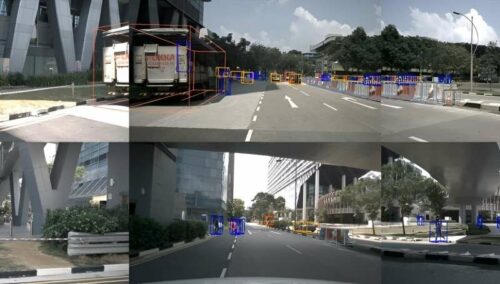UTIAS researchers introduced advancements in multi-object tracking for autonomous vehicles that improve the safety and reliability of robotic systems by enhancing their ability to monitor and predict the movements of vehicles, pedestrians, and cyclists in densely populated areas.

Researchers at the University of Toronto Institute for Aerospace Studies (UTIAS) have unveiled two high-tech innovations aimed at enhancing the safety and reliability of autonomous vehicles by improving their robotic systems’ reasoning abilities. These innovations focus on multi-object tracking, crucial for autonomous systems to monitor and predict the movements of vehicles, pedestrians, and cyclists in densely populated areas.
Multi-object tracking involves collecting data from computer vision sensors—such as 2D camera images and 3D LIDAR scans—at a rate of ten times per second. This data is then filtered to predict the future movements of objects. “Once processed, it allows the robot to reason about its environment,” explains Sandro Papais, a Ph.D. student at UTIAS. “For example, identifying a pedestrian crossing or a cyclist changing lanes.”
Presented at the 2024 International Conference on Robotics and Automation in Yokohama, Japan, Papais, along with co-authors Robert Ren and Professor Steven Waslander, introduced the Sliding Window Tracker (SWTrack). SWTrack is a graph-based optimization method that uses additional temporal information to prevent missed objects, improving tracking performance, especially when objects are temporarily occluded. By extending the temporal window up to five seconds, SWTrack maintains more consistent tracking of dynamic objects. The team validated their algorithm using the nuScenes dataset, a large-scale public dataset for autonomous driving, demonstrating improved performance with extended temporal windows. “Most tracking algorithms struggle with temporal gaps, but our method validates that we can track over longer periods and maintain consistent tracking,” says Papais.
This collection of extensions for 2D tracking-by-detection methods leverages probabilistic object detection to quantify uncertainty estimates. “Uncertainty estimates help us understand when predicted detections might cause errors in downstream tasks due to low-lighting or heavy occlusion,” explains the team. They mentioned that the current research focuses on visual anomaly detection for Canadarm3, part of the Gateway lunar outpost project and these advancements build on years of work at the Toronto Robotics and AI Laboratory. They also added that they need AI methods that understand the persistence of objects over time and can reason when encountering something new or unexpected. their research aims to achieve this.





